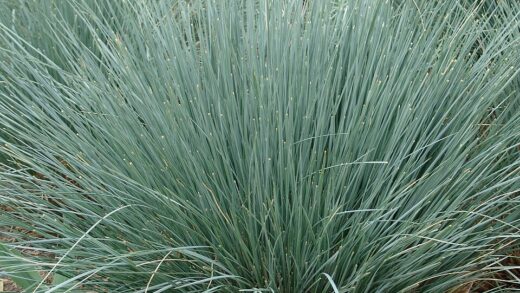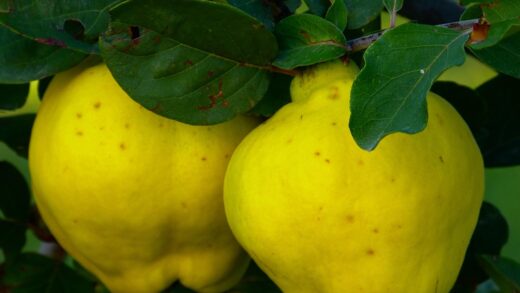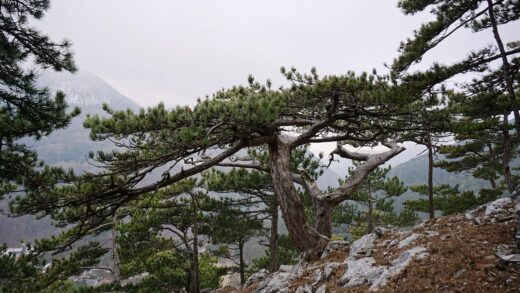Successfully guiding a quince tree through the challenges of winter is a critical aspect of its year-round care, ensuring its survival and setting the stage for a vigorous and productive season to follow. While established quince trees are generally hardy and can withstand cold temperatures, they are not impervious to the harsh conditions that winter can bring, such as deep freezes, fluctuating temperatures, and damage from snow, ice, and hungry wildlife. Proper preparation in the autumn and continued vigilance throughout the dormant season are key to protecting the tree and helping it emerge healthy and ready for spring growth. The goal is to mitigate potential damage and provide the tree with the best possible conditions for its winter rest.
The process of winter preparation begins long before the first frost, starting in the late summer and autumn. A crucial step is to cease any nitrogen-rich fertilization by mid-summer. Late-season feeding can encourage a flush of new, tender growth that will not have adequate time to harden off and mature before the cold weather arrives. This succulent growth is extremely vulnerable to frost damage, which can weaken the tree and create entry points for disease-causing pathogens. Allowing the tree to naturally slow its growth as the days shorten is essential for its acclimatization to the coming cold.
Proper sanitation in the autumn is another fundamental component of winter care. After the leaves have fallen, it is imperative to rake them up from around the base of the tree and dispose of them. This simple act removes the overwintering spores of fungal diseases like quince leaf blight, significantly reducing the source of infection for the following spring. Similarly, any mummified or fallen fruit should be collected and removed, as these can harbor brown rot fungus and the pupae of insect pests, providing them a safe harbor for the winter.
Watering plays a surprising but important role in winter preparedness. If the autumn has been dry, it is vital to give the quince tree a deep, thorough watering before the ground freezes solid. A well-hydrated tree is much more resilient to the desiccating effects of cold, dry winter winds than a tree that enters dormancy under drought stress. This final, deep irrigation ensures that the roots and woody tissues are fully hydrated, which helps to prevent a condition known as winter desiccation or “winter burn,” where the tree loses more water through its bark than it can absorb from the frozen ground.
Preparing the tree for dormancy
As autumn progresses, a quince tree naturally begins its transition into dormancy in response to shortening day length and cooling temperatures. During this period, the tree actively moves sugars and nutrients from its leaves into the permanent woody structures—the branches, trunk, and roots—for storage. This process is visibly marked by the leaves changing color and eventually dropping. It is crucial to allow this natural leaf fall to occur without interference, as it is a sign that the tree has successfully stored the energy reserves it will need to survive the winter and fuel its initial growth spurt in the spring.
More articles on this topic
One of the most important practical steps in preparing a quince tree for winter is to ensure the area around its base is clean and well-maintained. After clearing away all fallen leaves and fruit, applying a fresh layer of organic mulch, such as wood chips or shredded bark, is highly beneficial. This mulch should be applied in a doughnut shape, extending out to the drip line but kept about 10-15 centimeters away from the trunk itself to prevent moisture from accumulating against the bark, which could encourage rot or provide cover for rodents. The mulch layer acts as insulation, helping to buffer the soil temperature and protect the shallow roots from the most extreme fluctuations of freezing and thawing.
For young quince trees, especially those in their first few years after planting, protecting the trunk from winter damage is particularly important. Their thin bark is susceptible to a condition called sunscald, which occurs when the low-angled winter sun warms the bark on a bright day, causing the cells to become active, only for them to be rapidly frozen and killed when the sun sets or goes behind a cloud. This can cause the bark to split and peel. To prevent this, the trunks of young trees can be wrapped with commercial tree wrap or painted with a white, water-based latex paint diluted by half with water, which reflects the sunlight and keeps the bark at a more stable temperature.
It is also wise to inspect the tree for any potential structural weaknesses before the heavy snows or ice storms of winter arrive. Look for any branches with narrow, “V”-shaped crotches, which are inherently weak and prone to splitting under a heavy load. While major structural pruning is best left for the late dormant season, removing any clearly dead or broken branches before winter can prevent them from being torn off by snow or wind, which can create large, jagged wounds on the trunk or main limbs of the tree.
Protecting against frost and cold damage
While mature quince trees are hardy, young trees and certain new growth can be vulnerable to damage from late spring or early autumn frosts. A sudden, sharp frost in the spring can damage the delicate, newly opened blossoms, which can severely impact fruit production for the year. If a late frost is forecast after the tree has begun to bloom, it is possible to offer some temporary protection. Covering a smaller tree with a frost blanket or even an old sheet overnight can help to trap radiant heat from the ground and keep the air around the blossoms just above freezing. The cover should be removed in the morning to allow for pollination.
More articles on this topic
The most significant threat from cold is not always the absolute lowest temperature but the fluctuations in temperature. As mentioned, sunscald is a prime example of this, where rapid heating and cooling cycles damage the trunk. The insulating layer of mulch helps to moderate these fluctuations in the soil, preventing repeated freezing and thawing cycles that can heave the soil and damage the shallow roots of the tree. A consistent snow cover is actually an excellent natural insulator for the root system, but it cannot always be relied upon.
Winter desiccation is another form of cold injury, caused by dry winter winds stripping moisture from the tree’s bark and dormant buds at a time when the frozen ground prevents the roots from replenishing this lost water. This is a particular concern for evergreen plants but can also affect deciduous trees like quince, especially in windy, exposed locations. Providing a deep watering in late autumn is the best defense. For very young or prized specimens in harsh climates, constructing a temporary windbreak using burlap or a snow fence on the windward side of the tree can help to reduce the drying effect of the wind.
After a particularly harsh winter, it is important to carefully assess the tree for any signs of cold damage in the spring. This may include dieback of branch tips, where the ends of the branches are dead and do not produce new leaves, or larger dead branches. It is best to wait until the tree has fully leafed out in the spring to be certain which parts are truly dead before pruning them off. Pruning any winter-damaged wood back to a point of healthy, living tissue will help the tree recover more quickly and prevent the dead wood from becoming a potential entry point for diseases.
Preventing animal damage
During the winter months, when other food sources become scarce, quince trees can become an attractive target for various animals. One of the biggest threats, especially to young trees, comes from rodents like voles and mice, and also from rabbits. These animals can cause severe damage by gnawing on the bark at the base of the trunk, often completely girdling the tree. Girdling, where a strip of bark is removed all the way around the trunk, severs the tree’s vital cambium layer, cutting off the flow of nutrients and water between the roots and the canopy, which is almost always fatal to the tree.
The most effective way to prevent this type of damage is to install a physical barrier around the trunk. A cylinder made of hardware cloth (a sturdy wire mesh with small openings) or a commercial plastic tree guard is an excellent protective measure. This guard should be tall enough to extend above the expected snow line to protect against rabbits, and it should be buried an inch or two into the soil to prevent voles from tunneling underneath it. It is important to ensure the guard is loose enough that it does not constrict the trunk as the tree grows.
Larger animals, such as deer, can also cause significant damage to quince trees during the winter. They may browse on the tender twigs and dormant buds, which can ruin the tree’s structure and remove the next season’s potential fruiting wood. In areas with high deer populations, the only truly effective long-term solution is to install a tall fence around the orchard or individual trees. The fence needs to be at least 2.5 meters high to reliably prevent deer from jumping over it. Repellents can offer some temporary protection but often need to be reapplied frequently, especially after rain or snow.
Another form of deer damage occurs when bucks rub their antlers against the trunks of young trees to remove the velvet or to mark their territory. This rubbing can strip away large sections of bark, severely wounding or even killing the tree. The same trunk guards used to protect against rodents can also offer a degree of protection against antler rubbing. Alternatively, driving a few sturdy stakes into the ground around the tree can sometimes be enough to deter the deer from being able to get close enough to the trunk to rub on it.
Post-winter care and assessment
As winter draws to a close and the threat of the harshest cold has passed, it is time to begin assessing the quince tree and preparing it for the upcoming growing season. The first task, usually performed in late winter or very early spring while the tree is still dormant, is to conduct the annual structural pruning. This is the ideal time to inspect the tree for any damage that may have occurred over the winter, such as branches broken by snow or ice, or any dieback caused by severe cold.
When pruning, carefully remove any branches that are dead, damaged, or diseased. Dead wood will be dry and brittle, with no green visible in the cambium layer when scratched with a thumbnail. Damaged branches should be cut back to a healthy, outward-facing bud or to a main branch. This “spring cleaning” not only improves the tree’s appearance and structure but also removes potential entry points for pests and diseases, allowing the tree to direct its energy into healthy, productive growth as the season begins.
Once the snow has melted and the ground is no longer frozen, it is time to remove any winter protection that was put in place. Tree wraps and trunk guards should be taken off to allow for air circulation around the trunk and to prevent them from constricting the tree as it begins its new season of growth. This also provides an opportunity to inspect the base of the tree for any signs of rodent damage that may have occurred despite the protective measures.
Finally, the transition from winter to spring is the perfect time to replenish the mulch layer around the tree and to apply a spring fertilizer. Gently pull back the old mulch, apply a balanced, slow-release fruit tree fertilizer over the root zone, and then cover the area with a fresh layer of compost or mulch. This provides the tree with the essential nutrients it needs to support the powerful flush of growth that will soon begin, setting it on the right path for a healthy and productive year.


















